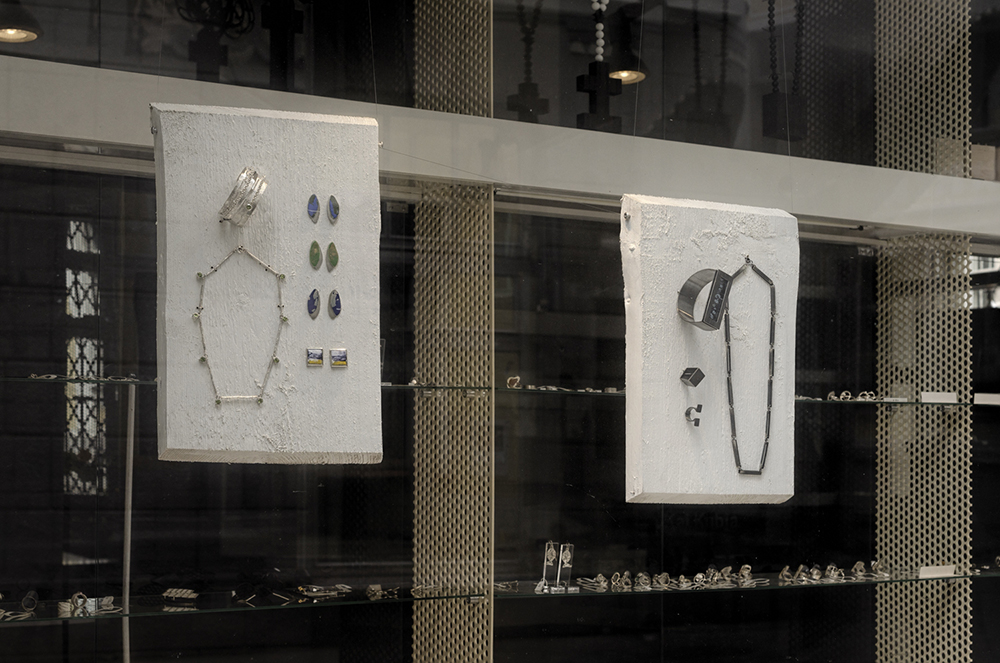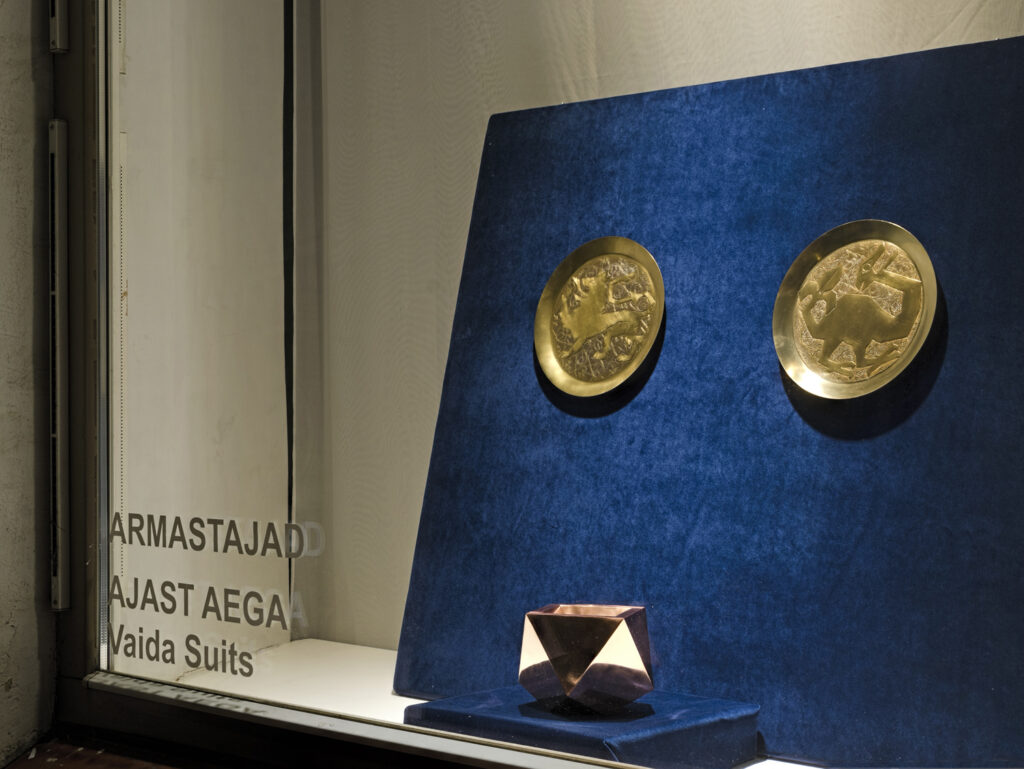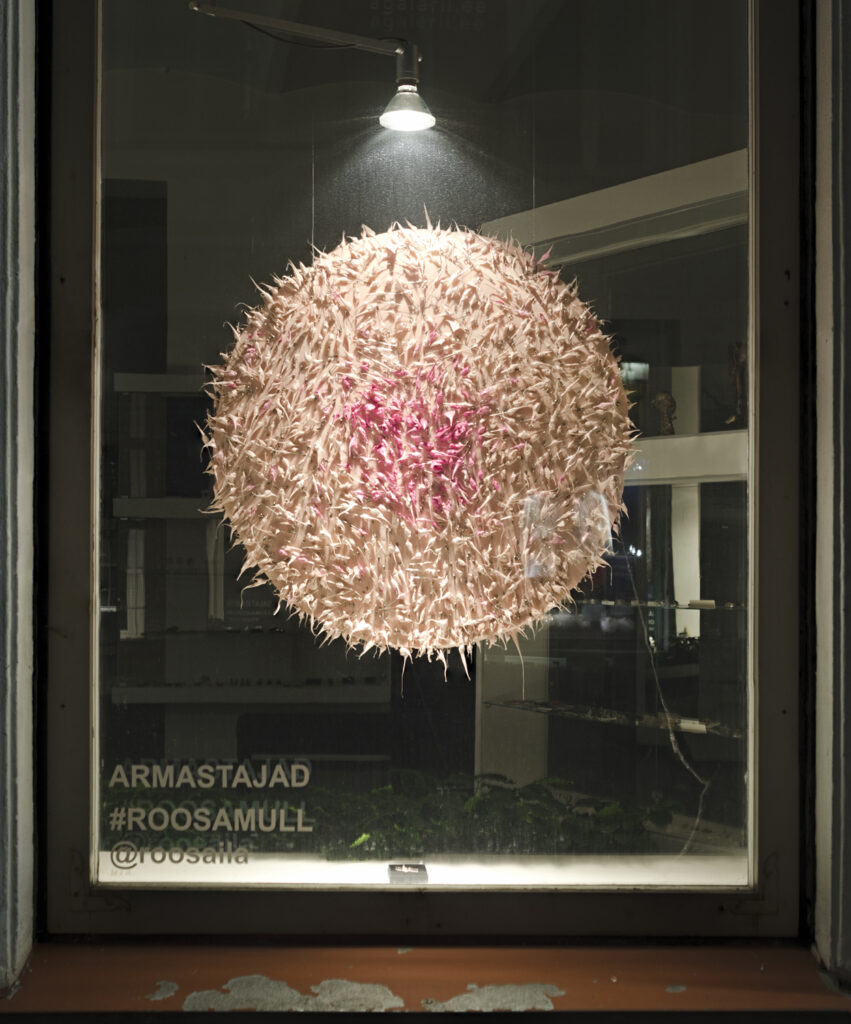



5 KNIVES
Tõnu Arrak
For some time it was a challenge for me, now it has become my profession. I simply wanted to make these objects. It is the thing I do best, it still has not become boring, it still challenges me. These knives have been made in the past year.
Tõnu Arrak (1964) is a knifemaker and a metal artist. Between 1985–1990 Arrak studied metal arts at the Estonian Academy of Arts. Before settling into his current practice of professional knifemaking, Arrak was a jewellery artist, blacksmith and a bladesmith. Knives made by Arrak – bearing the name Tuuts – are highly valued by many distinguished chefs in Estonia and abroad.
The knives of Tõnu Arrak have received multiple awards in France, Belgium, Germany and Finland. His solo exhibition “Striped Iron” was a collaboration with Estonian History Museum (2004). His latest exhibition “40 knives. Tõnu Arrak and Friends” took place at the National Library of Estonia (2014).
WHEN TIME STOPS / the world rushes on
Mari Pärtelpoeg
When the flow of my time stops: I see grass growing high, seeds ripening, a river finding the way between stones, clouds slowly changing shape.
Knitting silver wire is an old and slow technique of Indian and Tibetan origin, demanding patience – though thoroughly enjoyable. The details added to chain are either casted or pressed.
Mari Pärtelpoeg (1956) studied at the Estonian State Art Institute specializing in metal art (1974–1979). She has exhibited since 1978. In addition to participating at applied art exhibitions and quadriennials in Germany, Denmark and Sweden, her works have been shown at the Contemporary Swedish Silver Gallery in Stockholm (1992) and at the Scandinavian and Baltics applied arts exhibition “FROM DREAMS TO REALITY” in Tallinn, Riga, Vilnius, Copenhagen, Göteborg and Helsinki (1993/94). She has participated at the Tallinn Applied Art Triennial multiple times. She is one of the founders of ON-grupp but also works as an independent artist. Pärtelpoeg’s works are in the collections of the Estonian Museum of Applied Art and Design. Mari Pärtelpoeg has shown her works at a duo exhibition at Tallinn Art Salon together with Anu Paal (1986) and at solo exhibitions at A-gallery. Her latest exhibition “Garten”, collaboration with Katrin Veegen, was exhibited at Trofejas, Berlin (2017).
LONGINGS
Anu Paal
On display are brooches inspired by the motives of traditional sõlg and prees chest adornments. The brooches are made of wood and bark, conveying the idea of deep interconnectedness of indigenous heritage and the natural environment.
Anu Paal (1951) graduated from the department of jewellery and metalwork at ERKI (State Art Institute of the Estonian SSR) in 1979. She has participated in exhibitions in Estonia and abroad since 1978. In addition to applied art exhibitions in Estonia and the Baltics, Paal has participated at numerous exhibitions in Scandinavia, Germany, UK and Moscow since the end of the 1980s. Among others, she has had solo and collaborative exhibitions at Tallinn Art Salon (1986), the Estonian Museum of Applied Art and Design (1990, 1995, 2002), Kristjan Raud Museum (1995), Tallinn Art Hall (1996, 2011, 2016), Adamson-Eric Museum (2001) and at A-gallery (2016). Her works are in the collections of the Estonian Museum of Applied Art and Design. Paal was the recipient of the Kristjan Raud Art Award in 1991.
SOMEWHERE ELSE
Ülle Voosalu
That which is here is somewhere else.
A thought occurs, rushing past at great speed, and is realized somewhere else.
You only need to begin with an action and it will start reiterating itself, going its own way.
The end result is unpredictable or too simple to predict. It is decided somewhere else.
A game that cannot be captured here and now.
A game that is played somewhere else.
Ülle Voosalu (1954) graduated from ERKI as a jewellery artist. Since 1980, she has been had solo and joint exhibitions in Estonia,former Czechoslovakia, Russia, Finland, Sweden, Denmark, Lithuania, Latvia and Gemany. Voosalu is a member of the Estonian Artists’ Association. She worked as an artist in Tartu Ars and as a lecturer in Pallas University of Applied Sciences. Currently she is working as a freelance jewellery artist.









































